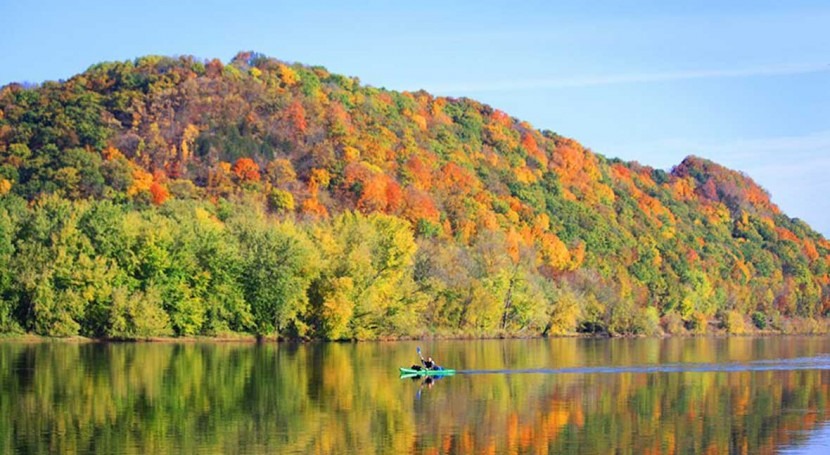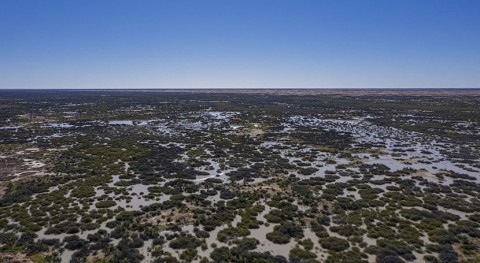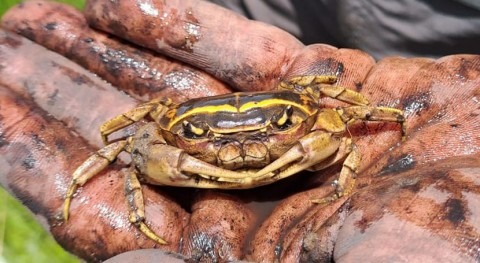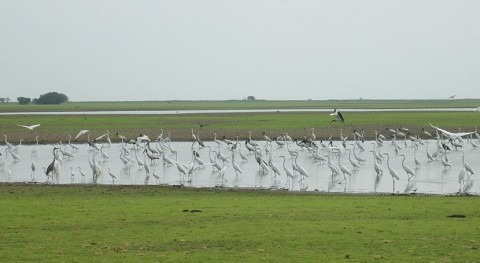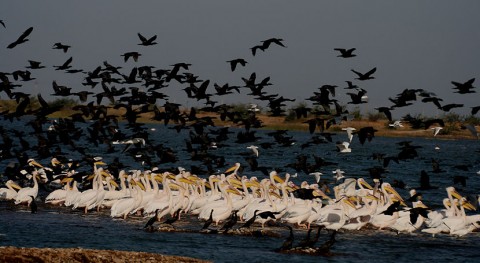The United States of America has designated Lower Wisconsin Riverway as its 41st Wetland of International Importance.
The site (no. 2417 on the List of Wetlands of International Importance) covers the longest free-flowing stretch of river in the Midwest and includes approximately 17,700 hectares from the Prairie du Sac dam to the confluence with the Mississippi River (where it meets another Wetland of International Importance, Upper Mississippi River Floodplain Wetlands).
Its importance is magnified through common boundaries with the nationally and internationally significant Mississippi River, the Driftless Area, and the Upper Mississippi migratory bird flyway. Its sloughs and marshes, forested bottomlands, sand terraces and bluff tops harbour a large number of species and diverse and rich communities.
 Lower Wisconsin Riverway. Credit: Timothy Jacobson
Lower Wisconsin Riverway. Credit: Timothy Jacobson
The Riverway has one of Wisconsin’s highest concentrations of rare and threatened species, providing habitat for 121 rare animal species such as the wood turtle (Glyptemys insculpta) and the Blanding’s turtle (Emydoidea blandingii) with 17 species listed on the IUCN Red list including the chimney swift (Chaetura pelagica), the rusty blackbird (Euphagus carolinus) and the ornate box turtle (Terrapene ornata). It is also important for the federally endangered Higgins’ eye pearly mussel (Lampsilis higginsii), a species endemic to the upper Mississippi River and its tributaries.
Threatened plants include the pale green orchid (Platanthera flava herbiola) and algal-leaved pondweed (Potamogeton confervoides). The site is listed as an Important Bird Area (IBA), supporting 25 breeding bird species such as lark sparrow (Chondestes grammacus), whooping crane (Grus americana) and worm-eating warbler (Helmitheros vermivorum).
The Riverway is one of Wisconsin’s most significant conservation and recreational areas because of its relatively wild, continuous natural area with a wide variety of native plant-animal communities. The area’s natural resources attract hundreds of thousands of tourists each year who come to hunt, fish, paddle, and relax, fuelling the region’s economy. However, the ecological value of the site is under constant threat from invasive species of aquatic and terrestrial plants and invasive animals and pests.


